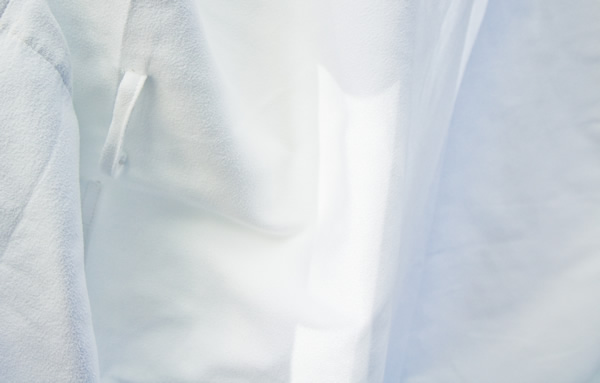Torah Sparks
Leviticus 16:1 – 18:30
Recently a student asked why the kittel (- a simple white robe, having no pockets and tied closed with a simple white belt) is worn for special prayer occasions. The prayer leader dons a kittel when leading the Prayer for Dew on Passover, the Prayer for Rain on Shemini Atzeret, when leading prayers on Hoshanna Rabba, and when leading prayers on the Days of Awe. The student volunteered that this simple white garment is a reminder of death, since we garb the dead with such white shrouds. The thought of death, she suggested, makes us serious and humbles us.
Our Torah portion begins under the specter of tragic death. It then proceeds to describe the Yom Kippur rituals that the High Priest must perform in order to achieve atonement for himself, his family and the entire people of Israel. The rituals, which include the killing of animals and the sprinkling of their blood, are meant to gain for us another year of life. Somehow we purchase our life through engaging in and taking control of death.
The Torah tells us that the High Priest, who usually wears a very elaborate uniform of colored, woven cloths, gold chains and precious stones, must leave off “his clothes” (Lev. 16:24) to perform these essential rites of the Day of Atonement. Instead he must wear simple white garments. This is actually the original kittel. It turns out that the kittel is not meant to remind us of how we clothe the deceased. On the contrary, the reason we clothe the deceased in a kittel is to endow him or her with the image of a High Priest entering the Holy of Holies. Just so, the deceased is being prepared to enter heaven.
But why, then, does the High Priest wear a “kittel”? Is it to remind him of death? Yet, this simple wardrobe is the daily uniform for all the regular priests, all year round. Do they also wear white in order to recall their mortality? Perhaps. But do we think that a bride wears white at her wedding in order to be reminded of death? Or, perhaps, the pure and plain white clothes of the High Priest are to remind him, on this day when he is exalted above all the other priests, that he is no different and no better than all those other priests. At the very moment when he is to perform rituals that no one but the High Priest may perform, he must shed his fancy garb and dress simply, like a plain priest. At this moment that is uniquely his, he must set aside his ornate costume that no one else may wear, that is specifically his, to wear these white garments, garments that are never called “his clothes.”
Perhaps this is a reminder of death, after all. It is at death that we remove the outer garments that we have considered our own, in order to stand before our Creator simply, as who we really are.
Shabbat Shalom
Rabbi David Greenstein
![]()
Subscribe to Rabbi Greenstein’s weekly d’var Torah
Image(s): untitled © Tom Wachtel altered and used with permission via Creative Commons License
- Toby Stein: In Memoriam - Thu, Feb 8, 2024
- Faithfulness and Hope: Parashat Sh’lach - Thu, Jun 23, 2022
- Past Their Prime: Parashat B’ha`a lot’kha - Thu, Jun 16, 2022

